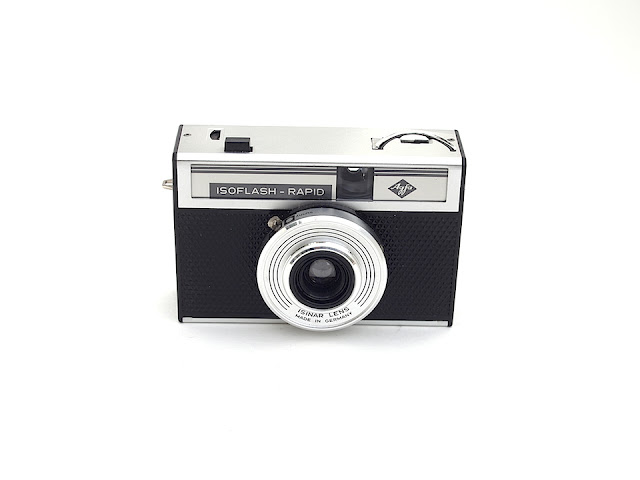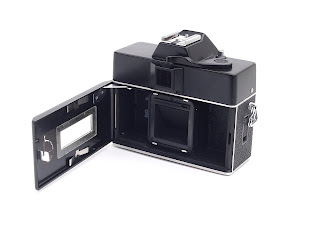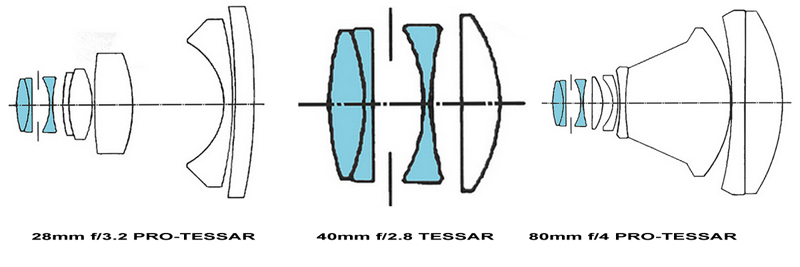Über Kodak's Retina I und ihre Geschichte habe ich schon 2012 ausführlich berichtet, damals anhand des Nachkriegsmodells 010 von ca. 1947 (siehe auch unten im Vergleich). Nun bin ich stolz, auch das Modell 118 (schwarze Version des Urmodells 117) mein Eigen nennen zu dürfen. Mein Exemplar hat die Seriennummer 544659 und stammt sehr wahrscheinlich von 1935. Es hat die Top-Ausstattung mit dem Compur-Rapid-Verschluss in einem Schneider Xenar (#699907). Nach dieser Nummer wurde dieses schon im September/Oktober 1934 hergestellt. Lack und Leder der Kamera sind etwas ramponiert, funktionieren tut aber auch nach 80 Jahren noch alles.
In 2012 I already reported in detail about Kodak's Retina I and its history. At the time based on the post-war model 010 made in 1947 (see also below in comparison). Now I am proud to be the owner of model 118 (black version of the original model 117). My copy has the serial number 544659 and originates most likely from 1935. It's well equipped with the Compur Rapid shutter in a Schneider Xenar lens (# 699 907). According to this reference this was produced in September / October 1934. Paint and leather of the camera are a bit worn, but overall everything is functional still after 80 years.
Nach diesem Fund liefen mir noch 2 weitere 010er auf Flohmärkten bzw. Trödelhändlern über den Weg, die ich natürlich retten musste. Die erste konnte ich für nur $10 erstehen und habe sie wenig später für ihren aktuellen Marktwert von $65 weiterverkauft. Die andere ist noch in meinem Besitz. Bei entsprechendem Gebot gebe ich sie aber gerne in Sammlerhände ab. Unten ein Gruppenbild von den dreien...
After this discovery I ran into two other "010" at flea markets and junk dealers. And of course I had to save them. The first I was able to buy for only $ 10 and sold it a little later for its current market value (about $ 65). The other is still in my possession. With an appropriate bid I will give it in other collector's hands. Below is a group portrait of the three...
Es gibt übrigends eine Historical Society of Retina Cameras (HSRC) und ein entsprechendes Journal mit durchaus interessanten Artikeln. Ich bin (noch) nich qualifiziert, dort Mitglied zu werden. Dazu muss man mindestens 10 Retinas oder Retinetten besitzen. Die hat der Australier Chris Sherlock allemal. Ob er aber Mitglied ist, gibt das Internet leider nicht her. Hier unten noch mal tabellarisch alle Retina I, die ich besitze (oder besessen habe). Vielleicht werden es ja doch noch mal mehr....;-)
By the way, there is a Historical Society of Retina Cameras (HSRC) and a corresponding journal with quite interesting articles. I'm not (yet) qualified to be a member. You need to own at least 10 Retina's or Retinette's. The Australian Chris Sherlock would surely qualify. However, the internet doesn't tell whether he is a member. Here is a short list of all Retina I that I own (or have owned). Perhaps I'll get some more in future.... ;-)
* M5SD oder M7SD bezeichnen Bauformen. Siehe hier.
* M5SD or M7SD are specific details. See here.















































